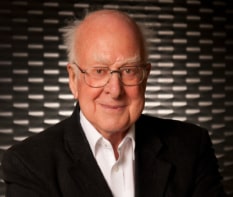Henry Preston and Saralyn Thomas say that nuclear energy must be part of the conversation during the COP26 climate talks in Glasgow next month

According to a poll carried out in 2020 by the Institution of Mechanical Engineers (IMechE), only a quarter of people aged between 18 and 24 in the UK are aware that nuclear is a low-carbon source of energy. Three-quarters of young people, in contrast, believe that wind and solar are low carbon, with only 61% of the eldest-age category polled – 65–74 year olds – knowing that nuclear falls into the low-carbon category too. Those findings might surprise physicists, who will be aware that the energy density of nuclear fission is so high that just a fingertip of uranium has an energy equivalent of 5000 barrels of oil.
Despite these benefits, nuclear power tends to suffer from relatively poor public perception and not knowing it is low carbon could be due to a lack of education. Indeed, it is understandable why people might fear radiation given that you can’t see it – yet the same can be said of the air that we breathe. And if we assess the whole impact of energy sources per kWh, then the energy “deathprint” – the number of people killed per kWh produced – of nuclear is significantly lower than that of most other energy sources.
If you care about the environment and giving more land and resources back to nature – as many young people do – then nuclear is an important option in achieving “net zero”. This refers to the balance between the amount of greenhouse gases produced and the amount removed from the atmosphere – with net zero meaning that there are no net greenhouse emissions from the entire energy system. The UK government has stated that it wants to be net zero by 2050 and says it will support secure, reliable, low-carbon nuclear energy as a commercially deployable technology that can enable rapid decarbonization of heat, power and transport.
Nuclear needs an image makeover so that it is viewed on a par with other energy sources that are widely considered clean and sustainable
The problem for nuclear – as highlighted by the IMechE poll – is that it must reinvent itself for the modern world and re-evaluate its position within a sustainable-energy mix. Nuclear needs an image makeover so that it is viewed on a par with other energy sources that are widely considered clean and sustainable. That will require the nuclear industry to engage openly with society to build better awareness and understanding of the advantages and disadvantages of nuclear energy compared with other energy sources. Only then will it get the support to plug the gap in the decarbonization of our energy consumption. As the International Nuclear Agency points out, that goal cannot be reached using renewables alone, which are intermittent and cannot be easily stored.
Young support
As physicists we are well equipped to drive the conversation on climate change from the problem to solutions – one that nuclear needs to be a part of. We want to ensure a clean, sustainable and abundant future for us and the next generation. The COP26 climate talks that will be held on 1–12 November in Glasgow offer a perfect opportunity to do so. The UK Nuclear Institute will have an unparalleled reach at COP26 through collaboration with the European Nuclear Society – a non-governmental organization – and aims to get people excited about nuclear and ensure it is at the table and considered alongside renewables.
As part of that initiative, in February 2021 the Nuclear Institute’s Young Generation Network (YGN) launched the #NetZeroNeedsNuclear campaign to promote, support and raise awareness of nuclear as a low-carbon energy source. The initiative also sought to influence policy makers involved in COP26, take a scientific approach to energy policy and financing, and foster a sustainable collaboration between nuclear and renewables.
The YGN’s “position paper” called Nuclear for Climate, which summarizes the importance of nuclear, was supported by more than 100 nuclear associations worldwide and has so far been translated into 17 languages. In it, we emphasize that nuclear is not only a low-carbon source of energy, but is also widely available, scalable and deployable. We therefore need to build new nuclear plants – alongside increased renewable-energy capacity – if we are to deliver efficient and affordable clean-energy systems and achieve our net-zero targets.
Nuclear is also capable of supporting the decarbonization of other sectors, such as heating and transport. Indeed, nuclear allows the opportunity to decarbonize all energy, not just electricity. This can be done directly with the output of future “generation IV” reactors or through the steady production of hydrogen as a clean fuel for transport. Nuclear also supports global development by promoting global socioeconomic benefits and is strongly aligned to the UN sustainable development goals.
The collaboration between different parts of the energy and the wider sector has been a key part of #NetZeroNeedsNuclear and we must work together to save our planet. We hope that the move to nuclear will be the wildcard of COP26 and, as early-career physicists, we urge our fellow physicists to stand with us and support nuclear – alongside other clean energy sources – as a key part of our journey towards a new sustainable future.



